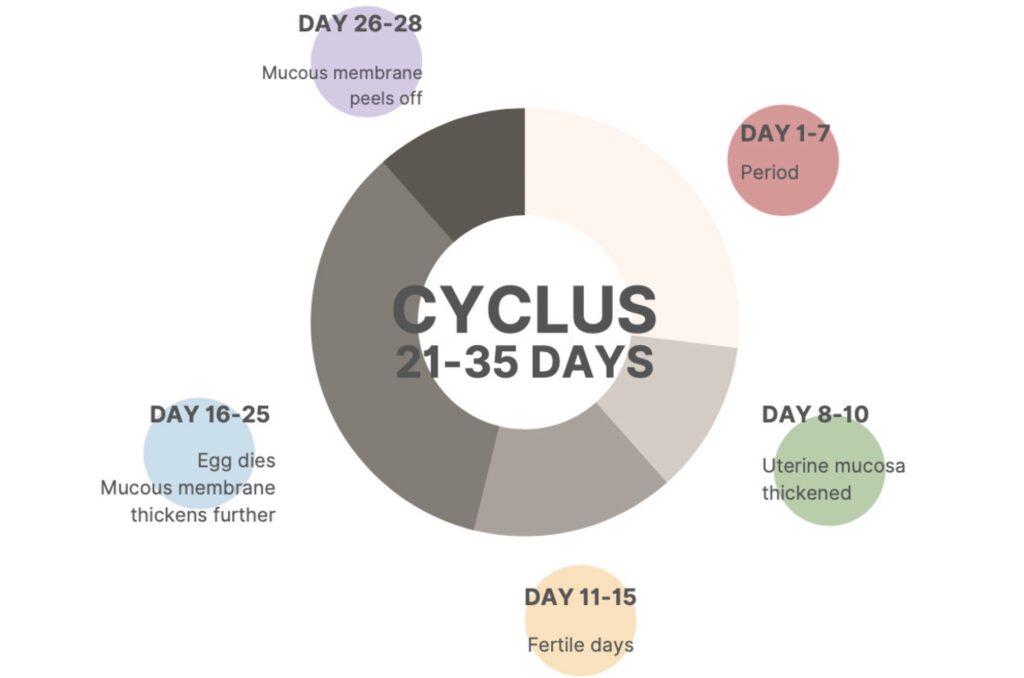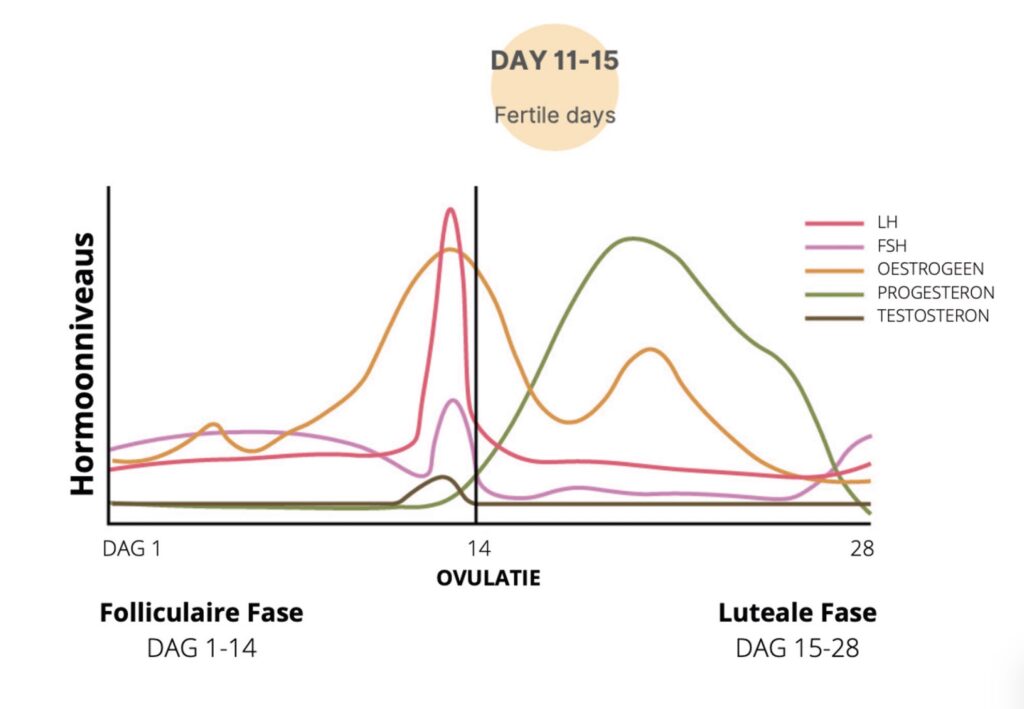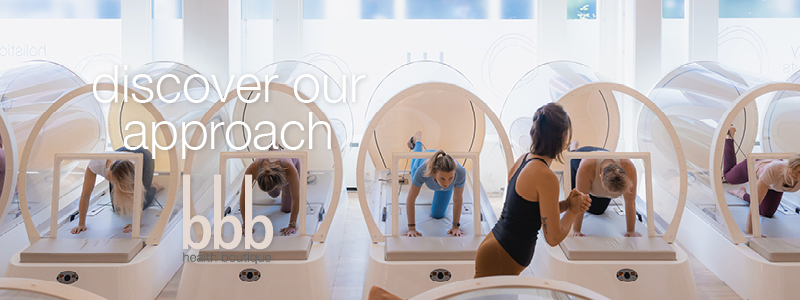the female cycle
hormones in balanceHow does the female cycle work? Everything we do creates an imbalance; exercising, eating or not eating, drinking or thirsty, going out at night or exposure to cold or heat. It is up to your body to keep returning to the so-called homeostasis, the balance. The more flexible you are through a healthy lifestyle, a good flow and not too much (annoying) stress, the wider your flexibility bar is. In other words, the more room for imbalance and the easier you get back into balance.
Hormones out of balance
If there is an (unknowingly) unhealthy lifestyle with, for example, chronic stress, excessive alcohol use (such as bulk drinking), highly processed food with a lot of sugars or a disturbed bio- or sleep rhythm, your hormones may be disrupted. This can lead to missed periods or ovulation, mood swings, acne, breast pain or menstrual cramps, headaches, tenseness, anger, depressed feelings and/or concentration disorders. These are often the first signals that indicate to the body that ‘something’ is going on in the body.
Common hormonal complaints are
PMS (Premenstrual Syndrome)
Physical and psychological complaints a week before menstruation, such as abdominal cramps, low energy and/or feeling depressed or easily angry.
PCOS (Polycystic Ovarian Syndrome)
Cysts grow on the ovaries, which can have negative consequences for fertility. This is largely due to having a genetic predisposition, in combination with higher stress or a higher weight for a longer period of time – barring exceptions. Characteristics of PCOS include irregular or no periods, reduced fertility, obesity and excessive hair.
Endometriosis
Here there is uterine-like mucous membrane on tissues outside the uterus. For example on the ovaries, fallopian tubes or abdominal cavity. Because it resembles endometrium, it also thickens around menstruation. But because it cannot be properly discharged, as in the womb, the body will try to clear it up and cause inflammation. This can cause scar tissue or adhesion of certain organs, such as bladder, intestines and/or uterus. This can hurt a lot. Endometriosis can be related to hereditary predisposition. After the menopause, the symptoms may disappear completely. The severity of the symptoms can vary during the fertile period. For example, you may feel severe pain in the lower abdomen during menstruation. Some women are always in pain.
Cystitis (hormonal)
Due to an imbalance in the intestinal bacteria, this can also cause an imbalance in the vaginal flora. This can make you more susceptible to bladder infections. Antibiotics are usually given for bladder infections. This breaks down both the intestinal and vaginal flora, so that you can end up in a vicious circle. It is therefore always important to take a probiotic with a course of antibiotics.
Menopausal complaints
Every woman eventually goes through menopause. One suffers from this more than the other. Think of weight gain, migraine, heart palpitations or dizziness. And psychologically with mood swings, panic and/or anxiety attacks, insecurity, agitated feeling, forgetfulness, easily overstimulated or gloomy feelings. The degree of menopausal symptoms is partly genetic and partly lifestyle-dependent (see also the Transition & Menopause tool).
Basic hormones
Hormones give body cells orders to ensure that our body remains or comes into balance. Think of regulating blood pressure, blood sugar, inflammation level, tissue breakdown or tissue repair.
The most important hormones in the female cycle
Estrogen
Stimulates femininity, libido and fertility. Promotes serotonin release to the brain, tissue production, firm skin and brain blood flow.
Progesterone
Prepares the endometrium for the implantation of a fertilized egg. This prevents the maturation of new eggs. It makes the cervix inaccessible to sperm cells. It therefore ensures that a fertilized woman cannot be fertilized again. With the aim of giving a fertilized egg the best chance. If fertilization does not take place, the progesterone production decreases again, the built-up endometrium is broken down and your period starts.
In summary, progesterone ensures a good pregnancy, relaxes muscles during pregnancy (womb) and during the second two weeks of the cycle it relaxes the intestines a bit. It also has a calming effect and raises the body temperature.
Testosterone
Women also have this hormone.. It strengthens the masculine qualities, stimulates muscle growth, sebum production and libido.
Cortisol
Is often described as a ‘stress hormone’. It is a very nice and especially useful hormone, because it makes us stress resistant, also called an anti-stress hormone. It takes over adrenaline in order to survive longer when a stressor is longer than ‘acute’.
- It raises blood sugar levels in stressful situations to release more glucose for the body. This is what your body (traditionally) thinks it needs in stressful situations to be able to fight or flee.
- Inhibits inflammation and the immune system. Just think of that colleague or maybe yourself who never gets sick or always during vacation. Continuously high cortisol suppresses the immune system, because at a moment of survival there is no time for a virus / bacteria. Your body will clear this up later, provided this later moment comes when you can give your body the rest and relaxation.
- Determines the day-night rhythm: we wake up due to a cortisol peak. The evening before the cortisol starts to rise again. ‘Evening people’ often become active again at that peak of about 11 p.m. This has not so much to do with morning or evening people, more with getting used to and staying awake until that cortisol rise. So try to be in bed before then if you want to get a good night’s sleep.
Insulin
Insulin promotes muscle growth and muscle maintenance. It also promotes testosterone production and stimulates the absorption of sugars into body cells from the blood. This keeps the blood sugar from rising too much. This allows the cell to store or burn the glucose for energy.
Cycle<
Our cycle has 5 phases (see picture 1), of which 2 main phases (see picture 2): the follicular phase and luteal phase. Read below about the different phases and write down what you experience to become more aware of your own cycle.


Follicular phase
Day 1 to ovulation, average around day 14.
Luteal phase
From ovulation to the first day of menstruation, average around day 28.
Under this Follicular and Luteal phase, there are different phases (see figure 2).
Phase 1 – day 1 – 7
- Estrogen is low and progesterone is down.
- The uterine mucosa is built up and is shed, this concerns the menstrual blood.
- A new cycle starts as the follicles begin to mature.
What do you notice here in terms of energy level?
Write it down for yourself.
Phase 2 – day 8 – 15
- Estrogen ensures that the endometrium can properly conduct any sperm cells to the uterus.
- You can recognize fertile days by clear liquid discharge around ovulation, comparable to raw egg protein, approximately between days 11 – 15.
What do you notice here in terms of energy level?
Write it down for yourself.
Phase 3 – day 16 – 25
- Ovulation takes place.
- Under the influence of progesterone, the thyroid function is stimulated, causing the body temperature to rise. A natural way of contraception is through temperature measurement, provided there is a regular cycle.
- After the fertile days, the secretion can become a bit thicker and yellower, comparable to (thin) pancake batter.
What do you notice here in terms of energy level?
Write it down for yourself.
Phase 4 – days 26 – 28
The days before your period you may feel less energetic, bloated and more moody.
This has everything to do with:
- Just before menstruation, estrogen levels drop (see image 2). Because estrogen is the precursor of the ‘happy hormone’ serotonin, you may feel a bit more down around your period. You may already experience this yourself, see the statement here. Reduced blood flow to the brain can also play a role in increased fatigue. In addition, serotonin is the precursor of melatonin, also known as our ‘night hormone’. As a result, some women suffer from bad night(s) around menstruation.
- The progesterone rises in the luteal phase (2nd phase cycle). Progesterone calms the bowels a bit, so you may feel constipated right before your period.
Now compare what you have written with the table below (image 3). What matches? What’s different?

This table can offer you insight into how you can organize your planning more cyclically, so that you can accommodate your body more. Not only through diet and lifestyle, but also in terms of agenda.
Nutrition
Through nutrition you can serve your body as much as possible, around and around your period and cycle. It is a pity, however, that a healthy lifestyle does not always immediately pay off in a balanced hormone system. It often takes some time to recover, such as 3 to 6 months. After, for example, stopping contraception or a period of being (mentally or physically) overstrained.
Important tips for the female cycle
- Low sugar for a balanced blood sugar and insulin level, to prevent (sweet) cravings and intestinal flora. Sugars feed the ‘bad’ gut bacteria.
- As much unprocessed food as possible because of fiber and unnatural additives that can mean (physical) stress for your body.
- Watch out for allergies and intolerances, this causes physical stress.
- Plenty of green vegetables. These contain the substances chlorophyll & DIM and help our liver to break down the other estrogens in the second two weeks of our cycle.
- Limit alcohol intake in the last week before menstruation. The body and liver already have to work hard to start all hormonal processes. As well as the liver, to break down any excess oestrogens. One alcohol consumption increases the estrogens by 30% within 24 hours. It has a testosterone-lowering effect, resulting in premenstrual syndrome complaints or heavy(er) menstruation.
- Phytoestrogens in fermented soy can be beneficial in the last two weeks of the cycle (see figure 2 table), because the body estrogens are then lowered, resulting in less energy and serotonin (‘happy hormone’).
- Watch out for estrogen-like chemicals: agricultural poisons, plasticizers (besphenol A), preservatives in care products (parabens), heavy metals (lead pipes). These products cause physical stress for the body.
- Maximum 2 to 3 cups of coffee per day in connection with adrenaline and cortisol. It is possible that you react more violently to coffee in the last two weeks, scale the amount of coffee, provided you experience stressed feelings.
- Ensure a healthy intestinal flora by eating whole foods with fiber, carbohydrates, proteins and omega-3 fatty acids.
Specific nutritional advice per phase
Phase 1 & 2 – day 1 – 14
- Possibly less affected by food sensitivities.
- Possibly less appetite (phase 2).
- Influence of alcohol.
Phase 3 & 4 – days 14 – 28
- Support the liver to break down oestrogens, by reducing alcohol intake and green leafy vegetables.
- About 400 grams of vegetables for fiber, vitamins and minerals.
- More carbohydrate needs, on the one hand because you become a little bit insulin resistant because of the hormone fluctuations. That means the cells are less able to absorb the glucose in their cells. On the other hand, the need for energy for, among other things, serotonin, which is partly formed in the body from carbohydrates.
- The energy requirement increases somewhat, think about 50 kcal, to be able to serve all physical processes in the body.
- Increased magnesium requirement due to constipation and fatigue.
Supplements for the female cycle
Vitamins, minerals and herbs can help support certain phases in your cycle. Female support (from our own bbb label) is one of them.
Female support
These capsules provide wonderful support for women. It is a fine combination of vitamins and herbs that, among other things, help with changing moods during the menstrual cycle and menopause. Female Support includes black cohosh. This is a plant that occurs naturally in North America and is ‘traditionally used by the Indians to treat menstruation and menopausal symptoms’. It also contains borage oil (cucumber spice), which ensures a balanced hormone balance.
